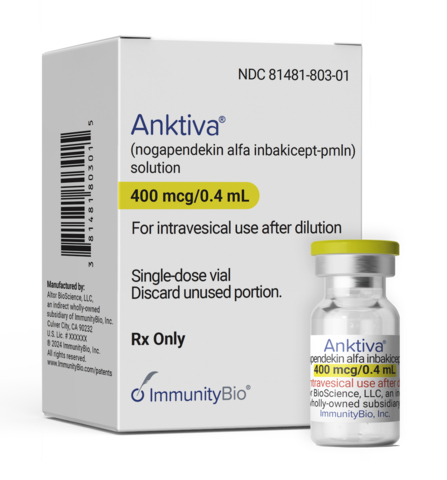Originally published on August 25, 2020:
Business as usual is anything but in the COVID-19 era, but as the pharmaceutical and clinical trials industries adjust, the US Food and Drug Administration (FDA) has received an influx of questions regarding site inspections and manufacturing-related queries. To help address these concerns, the FDA has released a new guidance document with a Q&A for the industry.
Impact of COVID-19 on FDA Inspections
After the FDA announced in March that it would be postponing all routine inspections, pharmaceutical and biologics manufacturers have been wondering how long this would last, how it would affect their operations and how they could maintain their inspection-readiness in the interim. For fiscal year 2019, the FDA conducted a total of 229 inspections of facilities involved in the production of pharmaceuticals, biologics, medical devices, veterinary drugs and food; this year, the agency has only conducted 91, with numbers having fell sharply in February and no inspections having occurred in April, May or June.
As of July 20, the FDA has begun the process of resuming domestic inspections, with so-called “mission-critical” inspections taking priority.
The regulator defines these mission-critical inspections as those that would impact US patients’ access to medical products used to treat, diagnose or prevent serious diseases for which there is no other option available. They point to facilities that test or manufacture products that have received breakthrough therapy designation as an example of those that would be prioritized for inspection.
While pre-approval inspections could be deemed mission-critical, the FDA said they intend to lean on “trusted foreign regulatory partners” along with records submitted by applicants themselves to limit this activity. For-cause inspections prompted by recalls and consumer complaints are likely to take precedence over more routine inspections.
But drugmakers aren’t the only ones feeling the effects of fewer FDA inspections. Clinical Research Organizations (CRO) and the broader clinical trials community overseen by the Bioresearch Monitoring (BIMO) program, have also experienced postponed inspections.
The FDA plans to use its COVID-19 Advisory Rating system to determine what kinds of surveillance activity can be resumed on a case-by-case basis. Their system takes into account the COVID-19 situation in various geographical regions to ensure the safety of both FDA staff members and those working at the inspection site.
Perhaps a welcome change is the FDA’s decision to stop surprise site visits for the foreseeable future. As a safety measure, as well as to make sure that important staff members are on-site during inspections, the FDA will be pre-announcing their visits to businesses.
Pharmaceutical Safety Concerns
With the FDA drastically reducing its inspection schedule for foreign manufacturers, it’s relying on its relationship with US Customs and Border Protection to ensure that drugs being imported into the country are safe for consumers. In addition to physically examining products at the border, they’re ramping up product sampling and testing before any can be distributed and sold.
Having a good history of compliance with the FDA could help manufacturers avoid import delays.
For companies whose sites cannot be inspected due to current travel restrictions, the FDA clarified that a complete response letter won’t automatically be sent. While facilities may be approved on the basis of other measures — like compliance history and data from foreign agencies — if an inspection is required, it’s possible that it won’t be conducted during the review cycle.
This means that firms could see significant approval delays while the FDA waits for the opportunity to safely conduct an inspection.
Pharmaceutical Manufacturing and Supply Chain Changes
The FDA is providing manufacturers with some flexible options when it comes to making COVID-19-related changes. For companies experiencing supply chain disruptions due to the pandemic and are looking to change a facility included in their New Drug Application (NDA) or Biologics License Application (BLA), the FDA refers to established guidance.
However, if an application is for a drug used to treat or prevent COVID-19, the FDA said that drug companies can request priority review. This also applies to products on the regulator’s drug shortages list.
Since companies are also needing to make manufacturing changes to NDAs and BLAs during the COVID-19 pandemic, the FDA is accelerating the risk-based assessment of these processes. The FDA has four reporting categories for manufacturing changes: major change, moderate change (prior to distribution), moderate change (during distribution) and minor change.
- Major change: this could have an adverse effect on a drug’s identity, strength, quality purity or potency. This submission must occur before the manufacturer enacts the change
- Moderate change (prior to distribution): this has a moderate potential to affect a drug’s safety or effectiveness. The FDA must receive this submission at least 30 days before the drug product manufactured after the change can be distributed
- Moderate change (during distribution): despite a moderate potential to have an adverse effect on a drug’s key qualities, manufacturers are permitted to continue to distribute the product while the FDA reviews the submission. However, the FDA could require the manufacturer to stop distributing the changed product if it doesn’t approve of the alteration
- Minor change: this change has minimal potential to negatively impact the drug’s safety and can be reported on the company’s next Annual Report
The FDA will consider lowering the reporting category for certain changes to expedite the approvals process. Manufacturers will need to provide their rationale for the change and the risk-mitigation approaches they’ll use in order to support their request for a lower supplement reporting category.
Finally, the FDA won’t be preventing manufacturers from submitting NDAs and BLAs that includes sites that are currently impacted by travel restrictions, however the inability of the FDA to conduct an inspection could prolong the approval process.












Join or login to leave a comment
JOIN LOGIN